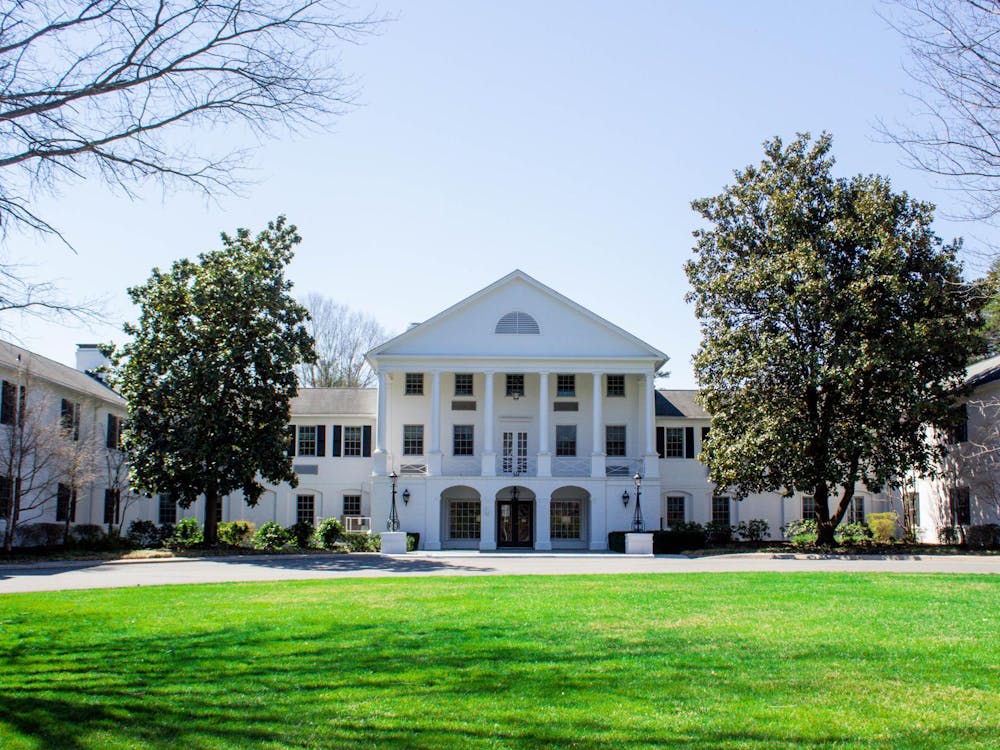Two years ago, COVID-19 disrupted our college experience. Though incomparable to the death and grief that has come of this pandemic, University students lost in-person courses and extracurriculars for over a year. Even today, most of our schedules navigate between virtual and face-to-face spaces, depending on the organization, the class or the event’s preference. University administration vaguely refers to in-person engagement as a “hallmark of our University,” yet I’ve witnessed students frequently succeeding in online settings. We may associate Zoom courses with the loss of a normal college experience, but I believe we should embrace the convenience and integrate virtual meetings into University life.
The School of Education and Human Development has been the primary department on Grounds to continue hybrid instruction despite the University’s push toward in-person classes. With many of its classes meeting online — either synchronously or asynchronously — the school has made class meetings more convenient for its students, especially for those who must drive from off-Grounds to attend in-person classes. Having multiple friends in the School of Education, I’ve repeatedly heard their support for its web-based instruction. Though it is antithetical to the University administration’s insisted “hallmark,” virtual classes benefit students.
I would be naïve to anticipate the entire University following in the School of Education’s footsteps. But across three semesters of virtual classes, I enrolled in many virtual courses in which discussion was no less lively than any physical classroom. Watching recorded lectures at an increased speed allowed me to learn the same amount of material in a shorter amount of time — and without having to walk in the snow to class. I found myself eating breakfast more often, with professors often encouraging us to eat during classes. One internship supervisor even applauded those eating dinner during our weekly evening meetings over Zoom. These improved both my mental and physical health, as I ate regularly, got more sleep and found myself a bit less stressed.
I’ve had many wonderful professors and teacher assistants who worked diligently to make virtual courses exciting, something I know not every professor achieved. With that being said however, the new comforts of Zoom classes were important. They should not be forgotten just because a supposed University “hallmark” has administrative priority. Alternating large lectures between in-person and recorded sessions, allowing for virtual discussions on days with bad weather and even holding virtual classes during the lead-up to exam season could help make students’ lives just a bit less hectic during stressful times.
Students themselves, though, have the capacity to regularly utilize virtual meetings under less administrative guidelines than faculty. On-Grounds student organizations are the primary bodies that can make virtual integration a reality. Extracurriculars are a vast category — ranging from Greek Life to activist groups, student government to student journalism and writing clubs to those appreciating Indigenous, Black, Asian and Latinx cultures. I do not say that these groups should move online permanently — food, dancing and the wonders of reading off a piece of paper rather than a computer screen often mark important facets of these organizations. However, they should consider virtual options for events able to be held over Zoom. After attending class all day, I usually find myself only wanting to attend a Zoom call if I have another meeting. I am so thankful for the event organizers who opt for online alternatives, even as the end of this pandemic hovers on the horizon.
Here at The Cavalier Daily, I’ve been disheartened to find in-person meetings made the standard after we began the semester with a hybrid model in light of the University’s initial precautions. Student journalism frequently occurs virtually — in the endless Google docs, group chats and email chains that form our communication and writing processes. Holding meetings online makes student-led groups more accessible as classes, jobs, families and other responsibilities burn us out. This is especially the case when a group’s meetings typically consist of updates and formalities rather than community building. Let’s save in-person affairs for those latter events. And let’s recognize that planning meetings and similar events are much more convenient over Zoom.
Though Zoom has a negative association with COVID-19, I’ve seen tides shifting in my conversations with friends. While there isn’t a mass desire to return to online classes, I’ve noticed a common recognition of virtual meetings’ convenience. For college students, convenience rarely indicates laziness — it is simply what’s most conducive to our education and wellbeing. Thus, I encourage all student leaders and organizers, as well as University administration, to make virtual meetings and classes a regular facet of the University.
Bryce Wyles is an Opinion Editor for The Cavalier Daily. He can be reached at opinion@cavalierdaily.com.
The opinions expressed in this column are not necessarily those of The Cavalier Daily. Columns represent the views of the authors alone.







